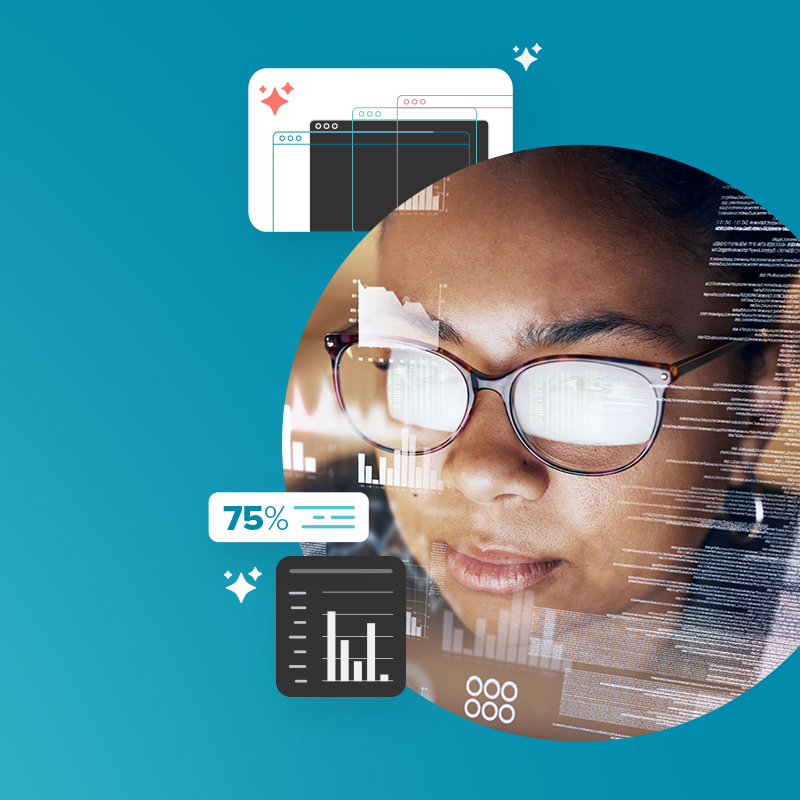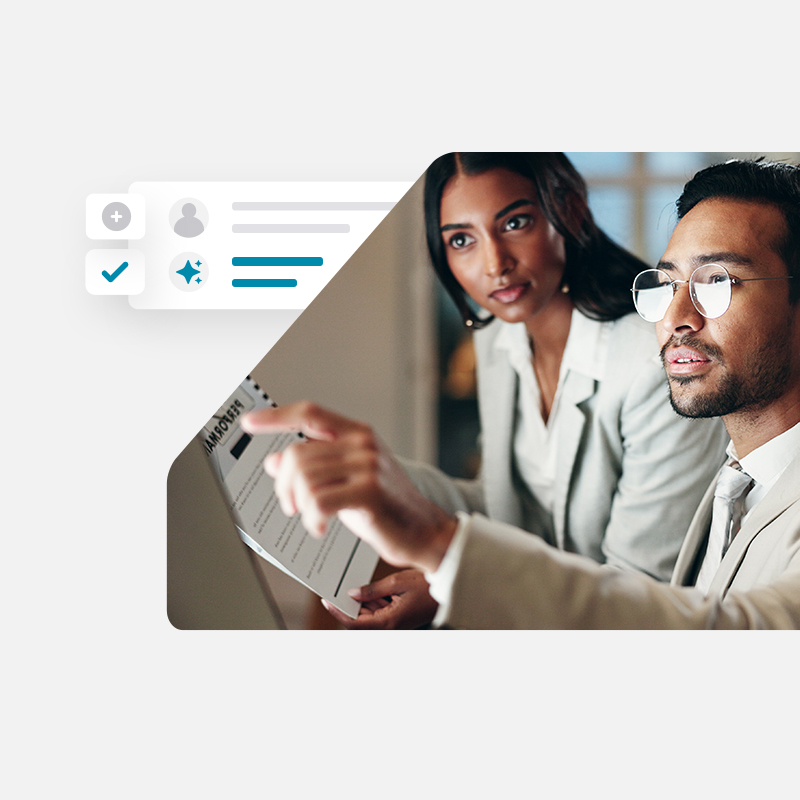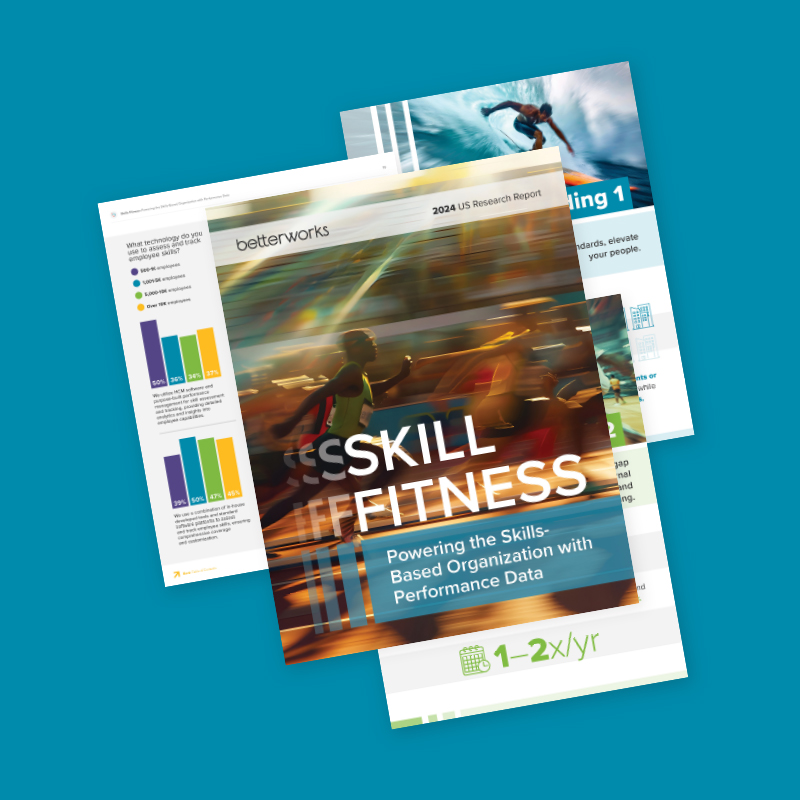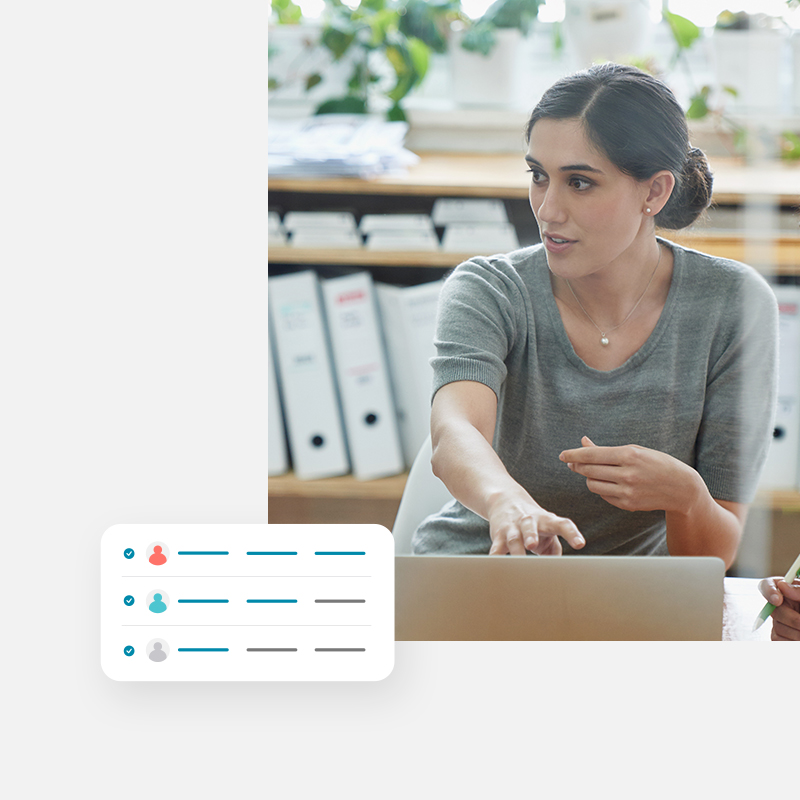The HR function is on the verge of significant change. At the heart of this revolution are the unique capabilities of generative AI, which go far beyond the narrow task-specific applications of the past and offer transformative potential for the future.
Navigating the rapidly evolving field of AI-powered HR software can be overwhelming. That’s why we asked Cheryl Johnson, Betterworks chief product and technology officer, Maher Hanafi, vice president of engineering, and Sam Schlunz, solutions engineer, to help demystify the technology.
Check out the highlights of the webinar, which is now on demand, or listen to excerpts from Cheryl in our People Fundamental podcast.
Subscribe wherever you listen to podcasts: Apple Podcasts | Spotify | YouTube Music
Understand what sets GenAI apart
What really sets GenAI apart from the AI we’ve seen in the past is its sheer creativity and flexibility. “Generative AI can create new original content or data of all kinds, whereas regular AI typically just analyzes and processes existing data,” Cheryl said.
Unlike the AI assistants of yesteryear that operated on more rigid algorithms, these new large language models can adapt to all sorts of tasks, from translation to content generation. “Generative AI is very flexible,” Cheryl said. “It can be used for many different tasks due to the model’s ability to learn and adapt from a wide range of inputs.”
Most impressively, though, GenAI systems feel much more human in their interactions. “A big reason ChatGPT captured the imagination of so many is how human it is in its responses,” Cheryl said. Unfortunately, GenAI’s greatest strengths are also its greatest weakness, since it can hallucinate results that aren’t true.
The final aspect of GenAI that sets it apart from more traditional AI models is its widespread availability. Unlike the proprietary models of the past, these powerful language models are now accessible through simple APIs, enabling a whole new era of innovation.
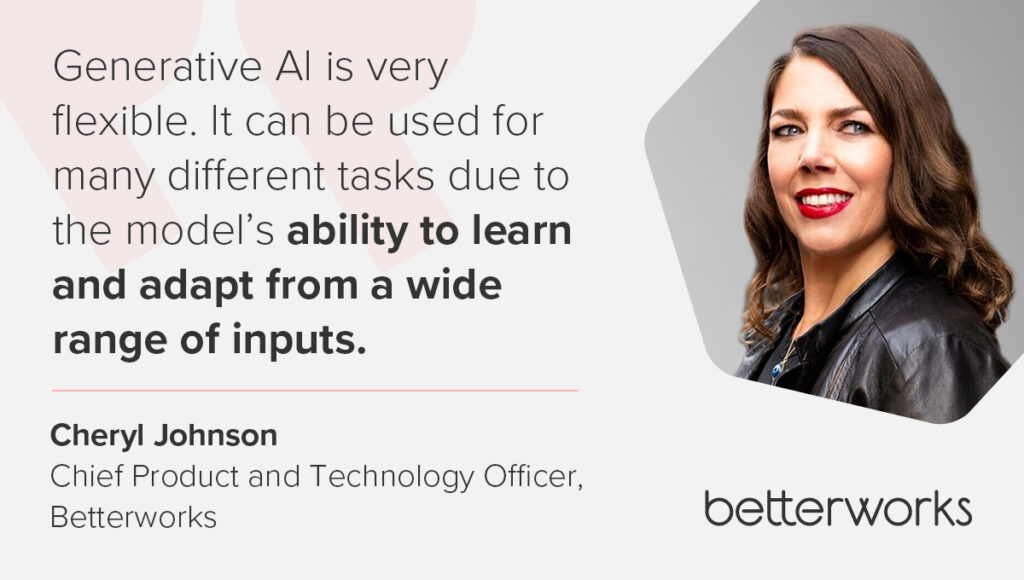
Evaluate HR tech for responsible use of AI
Look for vendors that have taken a thoughtful and intentional approach to deploying AI in their products. Betterworks, for example, has built its AI strategy on three key pillars: a human-centered approach, a focus on security, and specialized use cases.
Betterworks’ AI isn’t intended to replace humans, but to enhance what you’re capable of achieving. “It’s a co-pilot,” Maher said. This human-centered approach ensures that AI remains a supportive tool, rather than a replacement for human decision-making. “Think of it as having a highly qualified consultant by your side ready to offer guidance and support without ever imposing their own opinions,” Maher continued.
To improve security, Betterworks has implemented a self-hosting approach, keeping all AI interactions embedded within a secure system to safeguard sensitive employee data. “Our generative AI feature…employs multiple layers of protection and ensures your information remains confidential and protected,” Maher said.
Look for vendors that are transparent about their data practices and have clear protocols in place to protect employee information. This is especially true when it comes to the data used to train the model. “We don’t use any employee data to train, fine-tune, or improve the quality of our generative AI models,” Maher said.
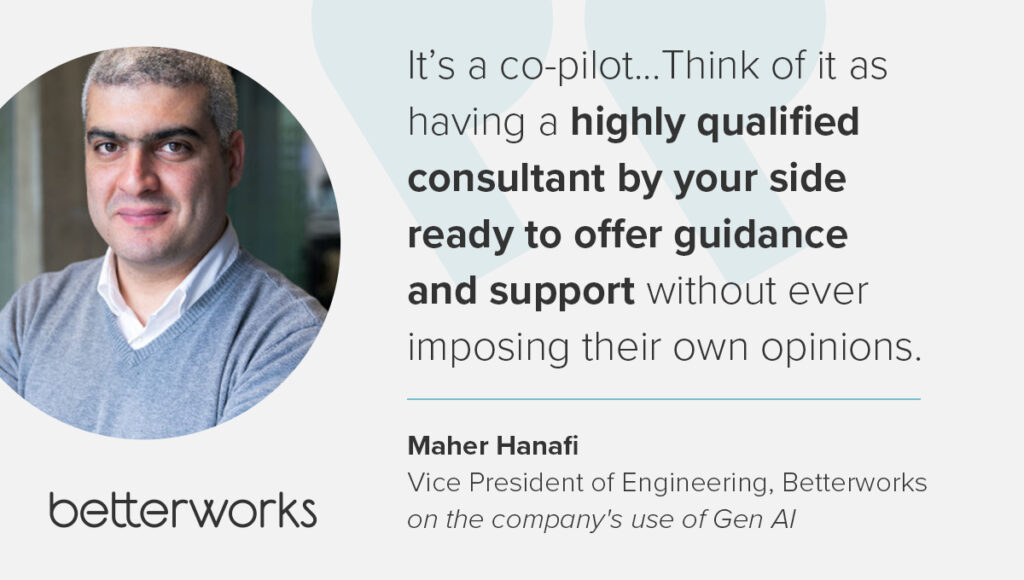
Finally, Betterworks has taken a specialized approach to product designs, tailoring them to have a transformative impact on traditional HR processes. “Betterworks doesn’t rely on generic chatbot interactions or one-size-fits-all generative AI,” Maher said. “Instead, we seamlessly integrate generative AI features as enhancements to our existing core functionalities.” This targeted integration ensures AI suggestions are directly relevant to the user’s workflow within Betterworks.
Look for transformative potential
GenAI, as designed and implemented by the Betterworks team, aims to transform key HR processes, from providing more effective feedback to streamlining goal-setting. It can take basic feedback from managers, for instance, and turn their general thoughts into a plan of action. “It will help you refine the feedback language, ensure it’s a clear, focused message,” Maher said. “And the employee…will gain a precise understanding or expectation of areas for improvement.”
Beyond feedback, GenAI can also revolutionize goal-setting by aligning individual goals with broader organizational goals. “It can very be very difficult, quarter in and quarter out, to come up with the goals that are really going to help me to develop and succeed in my role,” Sam said. “And so Betterworks has provided the opportunity for AI to have access to my personal past goals, my manager’s goals, the feedback that I’ve received throughout my tenure — all of this data that Betterworks has access to all come together to provide some recommendations.” This level of personalization and strategic alignment can unlock significant potential.
By augmenting human expertise with the power of AI, you can drive greater efficiency, enhance the employee experience, and unlock new levels of strategic value.
To learn more about what to look for from AI in HR technology, watch the webinar on-demand.
Put responsible AI to work in your performance management practices
